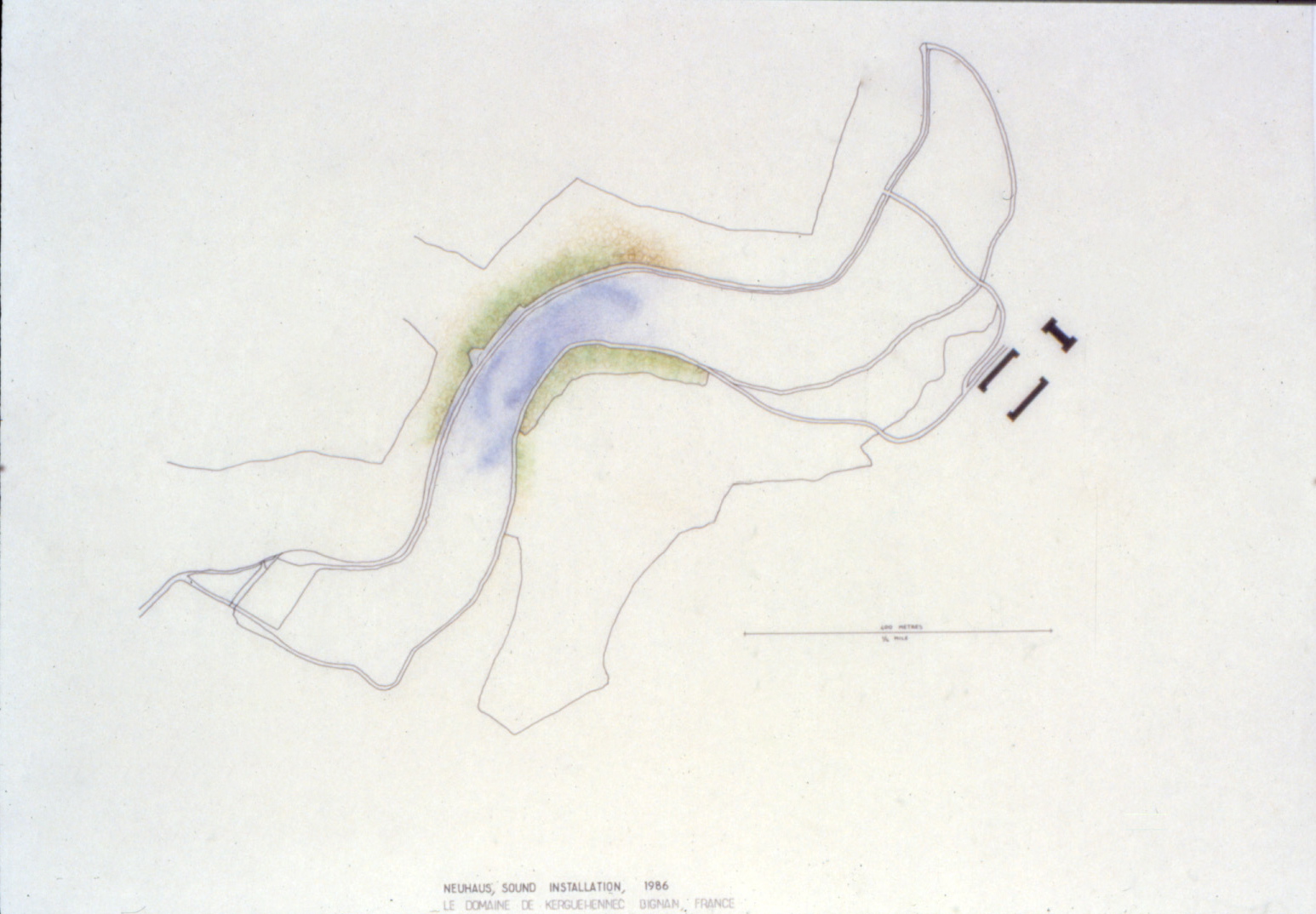Books published on the occasion of the inauguration of a sound work:
Max Neuhaus [French, English] (Locmine, France: Edition du Centre d'Art, Domaine de Kerguéhennec, 1987).
Created within the park of a Brittany estate, the Kerguéhennec work inscribes a place within the place of a lake, like a centre of gravity to the landscape, a cross-section of experience and environment. Four sound sources horizontally activate the water surface and project their acoustic image in a persistent, rapid and changing movement - a fluctuating hum, moving as if given to particular moods, like a water spirit or the essence of its expanse and surface. At the same time, like an invisible reflection echoing the marsh's depth and immobility and defining a maximum height, another high-pitched sound, insistent and unwavering, brings together the centre that is the sky and the vertical, upwards movement of head and eyes at the limit of aural perception. Set at the farthest point of sound, it is inaccessible, like the transparent, sightless mirror of the tangible, a faint yet crystalline intensity, the very substance of being, the soul of depth.
To the diagonal or X-shaped movement set up by the four sound sources answers the perpendicular criss-cross movement of the listener's ears and eyes. To the circular movement of the pathway around the marsh answers the spiral movement marking the listener's immobility and instant of perception. An oblique and multifaceted being seems to shimmer and echo through a double depth - that of the lake and that of our listening - through the double height of refracted light and of the air as it becomes sky and open space. The event before us becomes the event that contains us. What is inside extends to what surrounds us. The secret geometry of movements disappears without vanishing or merging with the surrounding world. It becomes structure and architecture in a place where nothing is constructed, nothing but the possibility of full presence in and to that place. To the site's serene silence comes the bustling response of nature. Passive contemplation of the landscape becomes active perception of beings present to themselves and to the world.
Advertisement, article continues Belowe this ad
denys-zacharopoulos, "Max Neuhaus," in Max Neuhaus [French, English] (Locminé: Edition du Centre d'Art, Domaine de Kerguéhennec, 1987)


